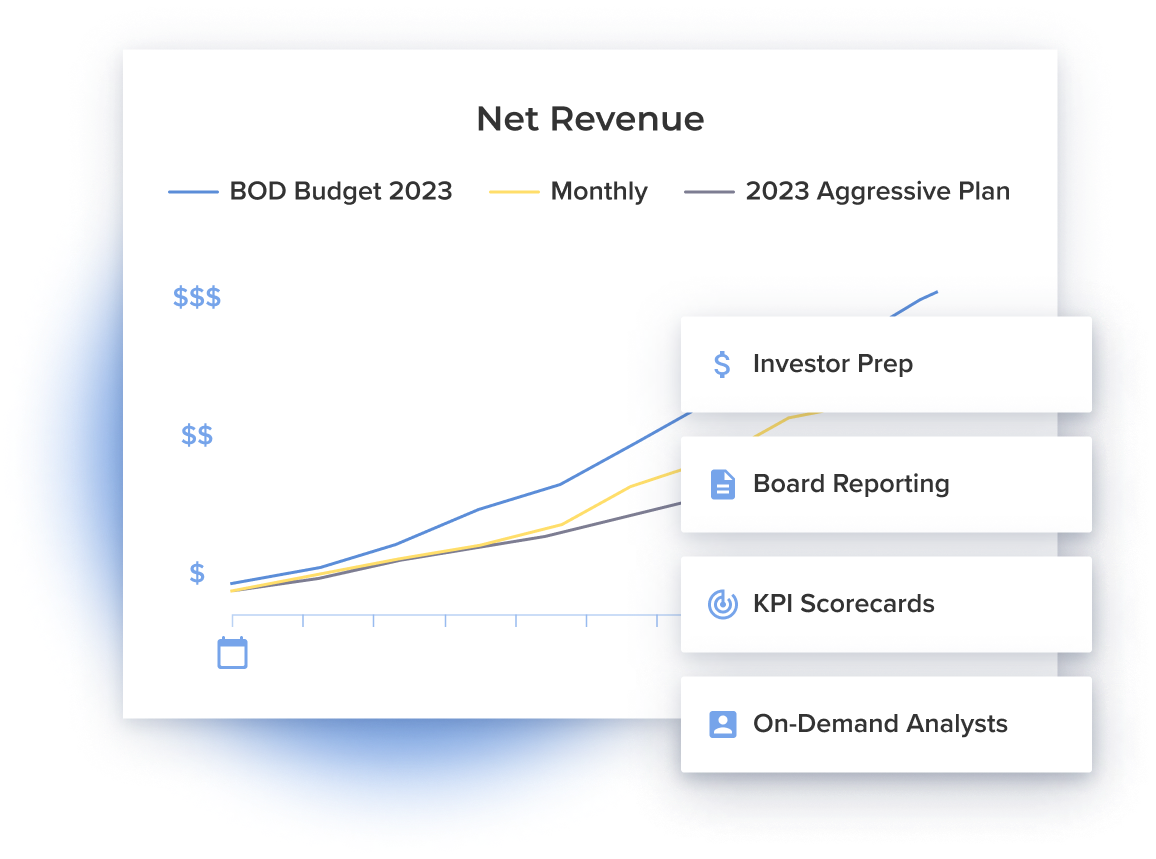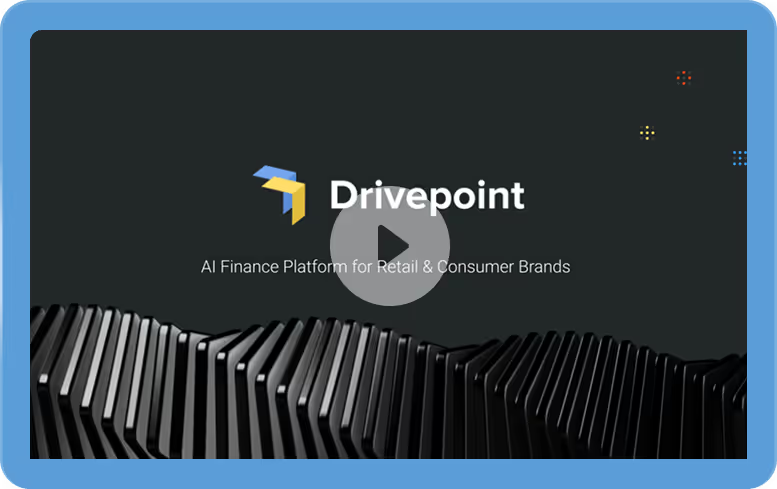Why Early-Stage Brands Should Invest in Strategic Finance: An Expert Guide


If you run a growing DTC brand, you probably know your financials backward and forward — but what if there were an easier way to manage them?
We sat down with Brett Bone, the VP of Strategic Planning at Simple Modern, to talk about how he helped transform Simple Modern from a fledgling drinkware brand into a well-known purveyor of a must-have accessory.
As we learned from Brett, a critical piece of Simple Modern's success was its commitment to strategic finance from day one. Whether transitioning from DTC to wholesale retailers or scaling Simple Modern’s offerings from water bottles to other lifestyle products, Brett’s team relied on a robust FP&A process to navigate each stage of growth.
Brett’s key tip? Having a system in place to manage your finances and make forecasts drives growth and profitability and builds stronger communication between internal and external stakeholders.
Keep reading for Brett’s insights on:
- Why early-growth brands should practice intense financial discipline
- How the three-statement model helps you unlock smarter forecasts
- The value of publishing your financials
- Why you should use Drivepoint’s strategic finance platform for your FP&A
Why financial discipline is crucial in early-growth stages
"The early growth stages require an intense amount of financial discipline. You have to think of your business as a financial machine with lots of moving parts to manipulate."
For Brett, taking a surgical approach to your numbers not only ensures that you never run out of cash but helps you visualize the impact of every choice you make. Should you spend more on ads or on a new product? What about investing in a new distribution channel? What effect will each decision have on the larger business?
He says Simple Modern never would have had the conviction to grow its distribution from DTC and Amazon to wholesale retailers like Target, Walmart, and Sam’s Club if he and his team hadn’t taken such a rigorous approach to their finances.
Plus, once things were rolling, having a model in place meant that they could flexibly tackle the unique challenges of moving from DTC to wholesale without too many growing pains.
Of course, assembling all of your financial data into a 360-degree strategy can be a heavy lift. That’s why Brett recommends building all your forecasts on the three-statement model. Viewing the income statement, balance sheet, and cash flow statement as an integrated model helps Simple Modern make data-driven decisions that take several different variables into account.

How Simple Modern uses the three-statement model to unlock smarter forecasts
"When you’re scaling from DTC to wholesale, the range of financial outcomes is just so wide — it’s hard to even wrap your mind around them all. But the three-statement model really helped us visualize the long-term impact of each decision."
With so many outcomes to contemplate as they grow, Brett and the rest of the finance team rely on the three-statement model to make sense of it all. It helps with everything from forecasting to sales and operations planning to traditional FP&A. Because the model is so comprehensive, he says they also use it to offer analytics and merchandising support to the larger organization — even though such tasks traditionally fall outside of the finance team’s purview.
With such a forward-looking model, Brett’s team has more cross-functional leverage than they might otherwise. Everyone understands how profoundly their insights impact Simple Modern’s bottom line — which means they get to weigh in on decisions like which products to offer at Target or what sizes and colors to stock on Amazon.
Brett attributes the three-statement model’s utility to two key benefits:
1. Better capital allocation
“At the most basic level, the three-statement model gives visibility into how much cash is coming in,” Brett notes. It helps you keep close tabs on your cash conversion cycle in the earliest stages of growth — which he says is especially essential if you’re bootstrapped.
Take Simple Modern’s early negotiations with its Chinese supplier. Brett’s team knew they wouldn’t get billed until supplies shipped, so they asked if their supplier could hold finished goods at the factory until the inventory was needed. Delaying the payment tightened the window between investment and cash flow and freed up millions of dollars in working capital that Simple Modern could spend on growth in the interim.
Had Brett’s team not been keeping a pulse on the cash conversion cycle and its relationship to the rest of the three-statement model, they wouldn’t have been able to make such a compelling case to their supplier — or leverage that working capital.
Now that Simple Modern has the luxury of using cash to scale, Brett’s team uses the three-statement model to determine how best to allocate any surplus that comes in — whether that means pouring more into marketing, launching a new product, or opening a factory in the US.
2. Risk management
When retail giants began to reach out to Simple Modern about going wholesale, Brett says he was initially reluctant: “We had to ask if wholesale was even worth it for us given that partnering with retailers would reduce our contribution margins to just $5 per unit.” With much higher DTC and Amazon margins, taking the leap didn’t feel intuitive for Brett and his team.
However, the three-statement model frankly laid out their situation for them, organizing every potential outcome into easy-to-understand upside and downside scenarios. And, in fact, Brett unlocked a different insight than he’d anticipated: Stocking the shelves of Target and Walmart would drive brand awareness better than Meta ads ever could — and get bottles in hands much faster.
Even though Simple Modern risked taking an early hit to its contribution margins, the projections put everything into perspective, helping Brett’s team realize that going wholesale would make the brand more money in the long run.

How publishing your financials compels action and creates accountability
"There’s a massive benefit in sharing as much as you can with your outside partners. When your business is growing rapidly, your forecasts are always going to be wrong — but the leverage and growth and alignment I’ve seen from publishing your plan far outweigh any drawbacks."
"If you aren’t accountable to investors, you might chafe at the idea of sharing your financials more than you have to," Brett admits. But he wants to disabuse people of this impulse. Even though sharing can be scary, he’s seen it inspire action and drive results from internal and external stakeholders over and over again.
Sharing internally fuels collaboration
Brett recommends sharing your projections widely within your own organization. “We tend to think of our financials as just accounting and finance’s domain, but sharing them cross-functionally ensures that everyone is on the same page,” he says. “Everyone in your organization should know the ins and outs of the three-statement model. Everyone should be thinking about contribution profit.”
When there’s internal buy-in, it’s easier to help people visualize how financial decisions can impact the entire organization.
Sharing externally compels action
Brett also enumerates the benefits of sharing your financials with your external partners. Although this prospect might feel even more daunting than publishing within your company, your partners will respond to the insights and become better collaborators for it.
Brett says banking partners, manufacturers, and 3PL partners always appreciate the context and heads-up of his shared reports — it makes them feel like a part of your company’s vision. Simple Modern’s contract manufacturer is a case in point. Prior to having access to the brand’s financial reports, their manufacturer almost never hit due dates. But once they saw Simple Modern’s financials and could see its growth trajectory, they never missed another deadline again.
Simple Modern uses Drivepoint to automate their best-in-class FP&A work
Ready to chart a clear path to profitability? With Drivepoint, sharing financial projections is easy.
Drivepoint puts financials from all your sales channels and accounting systems into one platform. Plus, we help you create shareable, user-friendly reports so you can send smarter, data-driven forecasts to internal teams, external partners, and investors.
Subscribe to our newsletter

Ready to see what you can do with Drivepoint?
Learn how other consumer and CPG brands are driving margin and cashflow with Drivepoint








